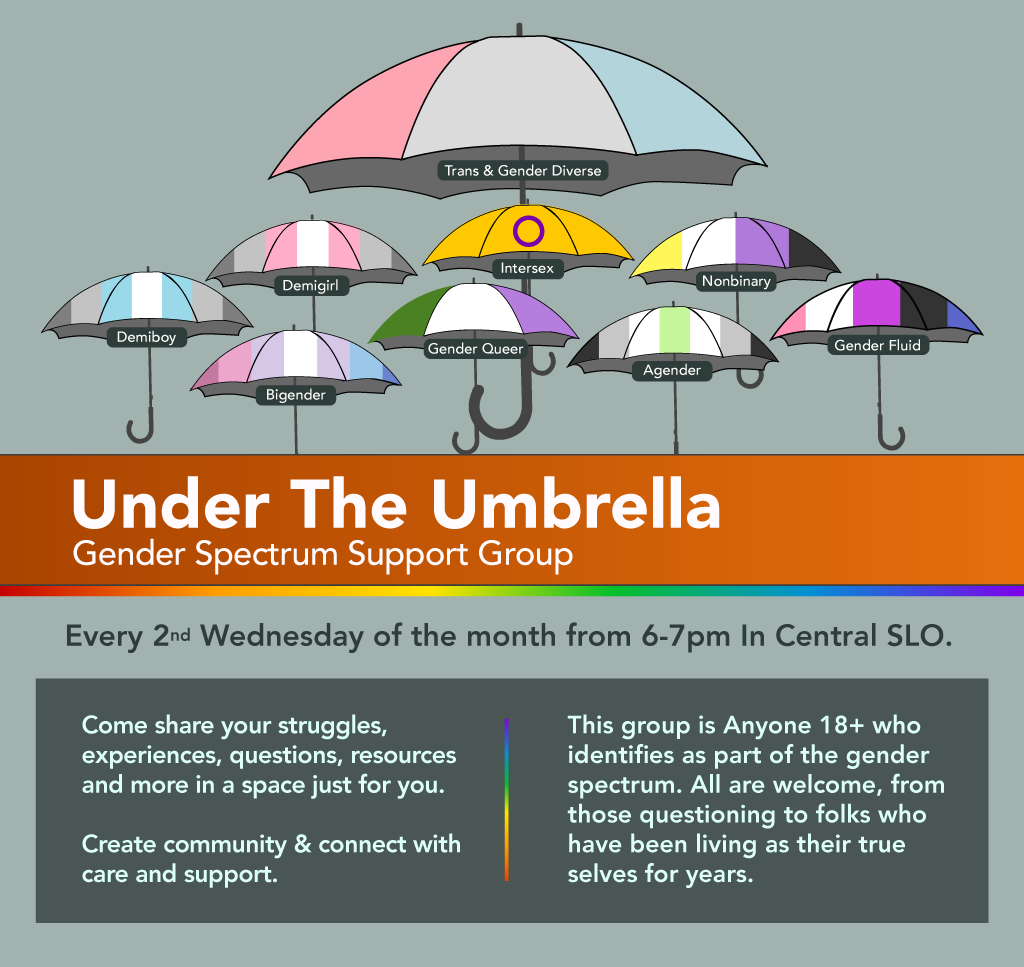
November 6, 2024, it’s 5am, I had been sleeping but something tells me to check my phone for the official election results. It is as I feared, Trump won. Suspecting that this would be the case and knowing it is the case felt like two different things. My thoughts instantly go to my many clients and friends on the gender spectrum, my heart hurts for all of us in the LGBTQIA community. I just didn’t know if I can bear the weight of the collective despair. I felt overwhelmed and stuck.
November 7, 2024, it’s time to organize. It’s time to look around my little corner of the world to try and figure out how I can DO something. In session, one of my clients remind me of the need for community, resource sharing and connection during these uncertain times. Today Under the Umbrella Gender Spectrum Support Group is born.
It’s taken some time to figure out the logistics and we are now ready to share this resource with all of you. Come and join us for our first monthly support group, taking place on December 10 at 6pm in SLO, hosted by myself (Dr. Sarah Park, she/her), Ellen Jones, LMFT (she/her), and community member Alexis Jacobs (she/her). This group is on a pay what you can basis with a suggested donation of $20 a group.
As an extra safety precaution I will ask that if you would like to attend you email me directly at sarahjoypark@gmail.com. I will share with you the group rules, location of the group and you will be added to our sign in sheet.
Let’s work together to build an even more robust gender spectrum community in SLO!
